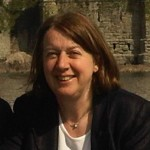MOOC (Massive Open Online Course)
MOOC – sostantivo numerabile
MOOC è una parola nuova che descrive un fenomeno nuovo o, più precisamente, un fenomeno già noto che ha assunto una forma nuova. L’apprendimento aperto e a distanza è possibile già da molti anni, ma il primo corso che ha preso il nome di MOOC
è stato avviato in Canada nel 2008 da docenti provenienti da quattro istituti diversi. L’idea, però, si è affermata solo nel 2012, quando diverse università in tutto il mondo hanno creato una serie di MOOC in collaborazione con altri soggetti competenti.
Le caratteristiche principali dei MOOC sono la fruibilità via Internet e la partecipazione ai corsi di moltissime persone, spesso residenti in Paesi diversi. I primi MOOC erano completamente gratuiti, ma successivamente in alcuni casi è stato introdotto il pagamento di certi servizi, ad esempio la certificazione dei risultati ottenuti, mentre in genere l’accesso ai contenuti dei corsi è rimasto gratuito.
Le abbreviazioni, in tutte le varianti possibili, sono spesso fonte di neologismi, e sigle come MOOC sono tra le tipologie più comuni. In inglese, le sigle formate da lettere che in sequenza creano una parola pronunciabile, ad esempio NATO o AWOL
(Absent without leave, assente ingiustificato), sono dette acronyms; mentre quelle pronunciate una lettera per volta, come
BBC o UN, prendono il nome di initialisms.
Per quanto riguarda la parte del discorso, le sigle normalmente sono dei sostantivi quindi MOOC può essere il soggetto
o l’oggetto di un verbo e avere una forma plurale; inoltre può essere utilizzato con valore aggettivale:
There are a number of good options for educators looking to build their own MOOCs.
When the MOOC phenomenon started to take off in 2012, the big three platforms shared a few key characteristics.
The current MOOCs are essentially modern versions of the external correspondence courses that have been available for 50 years
or more.
MOOC – countable noun
MOOC is a new word for a new phenomenon, or at least an old one that has taken a new form. Open and distance learning of various kinds has been around for many decades, but the first course to be given the name MOOC was set up in Canada in 2008 by academics from four different institutions. The idea really took off in 2012, with MOOCs being set up by universities around the world in collaboration with a range of other providers.
The defining features of a MOOC are that they are offered over the Internet and have very large numbers of participants, typically many thousands, often living in many different countries. The first MOOCs were free of charge to online participants but later ones have introduced fees for some aspects such as certification, while mostly retaining free access to course content.
Abbreviations of various kinds are a common source of new words, and acronyms like MOOC are one of the most common types. An acronym is an abbreviation consisting of letters that form a word which can be pronounced, such as NATO or AWOL. (An abbreviation whose letters are pronounced individually, such as BBC or UN, is called an initialism).
One feature of acronyms is that they function like normal words, so MOOC can act as the subject or object of a verb, can be pluralized and modified, and can modify another noun, just like a normal noun:
There are a number of good options for educators looking to build their own MOOCs.
When the MOOC phenomenon started to take off in 2012, the big three platforms shared a few key characteristics.
The current MOOCs are essentially modern versions of the external correspondence courses that have been available for 50 years
or more.



